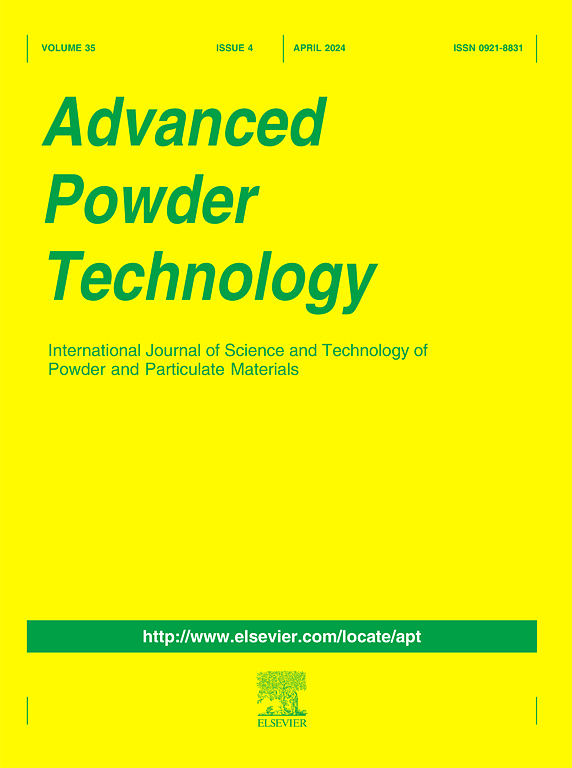Oxidation and laser ignition characteristics of Mn, Mo, Ta, and W powders in oxygen-rich environments
IF 4.2
2区 工程技术
Q2 ENGINEERING, CHEMICAL
引用次数: 0
Abstract
Manganese (Mn), molybdenum (Mo), tantalum (Ta), and tungsten (W) powders offer exceptional properties such as high strength, combustibility, and substantial volumetric combustion enthalpy, making them valuable for aerospace and industrial applications. This study investigates their oxidation and burning characteristics through thermogravimetric-differential scanning calorimetry and high-pressure combustion tests. Onset oxidation temperatures were determined as 340.23 °C, 475.01 °C, 523.90 °C, and 535.70 °C for Mn, Mo, Ta, and W, respectively. Mn forms Mn2O3 and Mn3O4, with combustion products exhibiting surface holes as substance migration channels. Mo and W form volatile oxides (MoO3, WO3) sublimating above 800 °C and 1200 °C, respectively, while Ta forms stable Ta2O5. Luminous intensity measurements quantified combustion evolution, revealing ignition delay times of 64 ms, 77.5 ms, 97.8 ms, and 128 ms for Mn, Mo, Ta, and W under 0.5 MPa oxygen, with Mn and Ta showing intense flames and faster reaction rates. Scanning electron microscope and X-ray diffraction analyses identified Mn3O4, MoO3, Ta2O5, and WO3 as primary combustion products. This study provides insights into the oxidation and combustion behaviors of high-density metal powders, supporting improved safety in powder metallurgy, 3D printing, and energetic material design.

求助全文
约1分钟内获得全文
求助全文
来源期刊

Advanced Powder Technology
工程技术-工程:化工
CiteScore
9.50
自引率
7.70%
发文量
424
审稿时长
55 days
期刊介绍:
The aim of Advanced Powder Technology is to meet the demand for an international journal that integrates all aspects of science and technology research on powder and particulate materials. The journal fulfills this purpose by publishing original research papers, rapid communications, reviews, and translated articles by prominent researchers worldwide.
The editorial work of Advanced Powder Technology, which was founded as the International Journal of the Society of Powder Technology, Japan, is now shared by distinguished board members, who operate in a unique framework designed to respond to the increasing global demand for articles on not only powder and particles, but also on various materials produced from them.
Advanced Powder Technology covers various areas, but a discussion of powder and particles is required in articles. Topics include: Production of powder and particulate materials in gases and liquids(nanoparticles, fine ceramics, pharmaceuticals, novel functional materials, etc.); Aerosol and colloidal processing; Powder and particle characterization; Dynamics and phenomena; Calculation and simulation (CFD, DEM, Monte Carlo method, population balance, etc.); Measurement and control of powder processes; Particle modification; Comminution; Powder handling and operations (storage, transport, granulation, separation, fluidization, etc.)
 求助内容:
求助内容: 应助结果提醒方式:
应助结果提醒方式:


